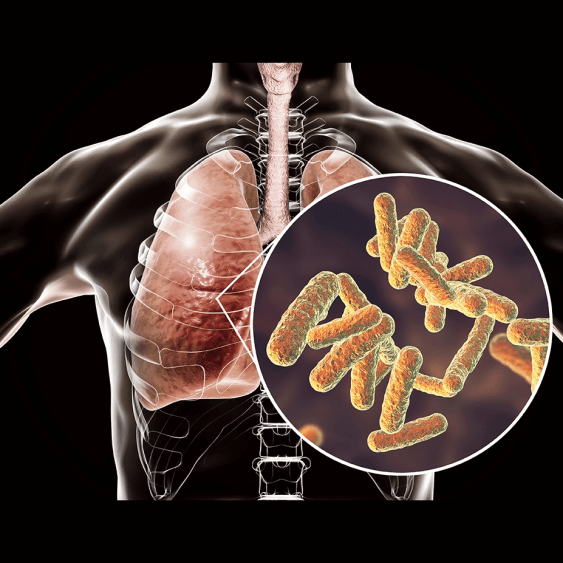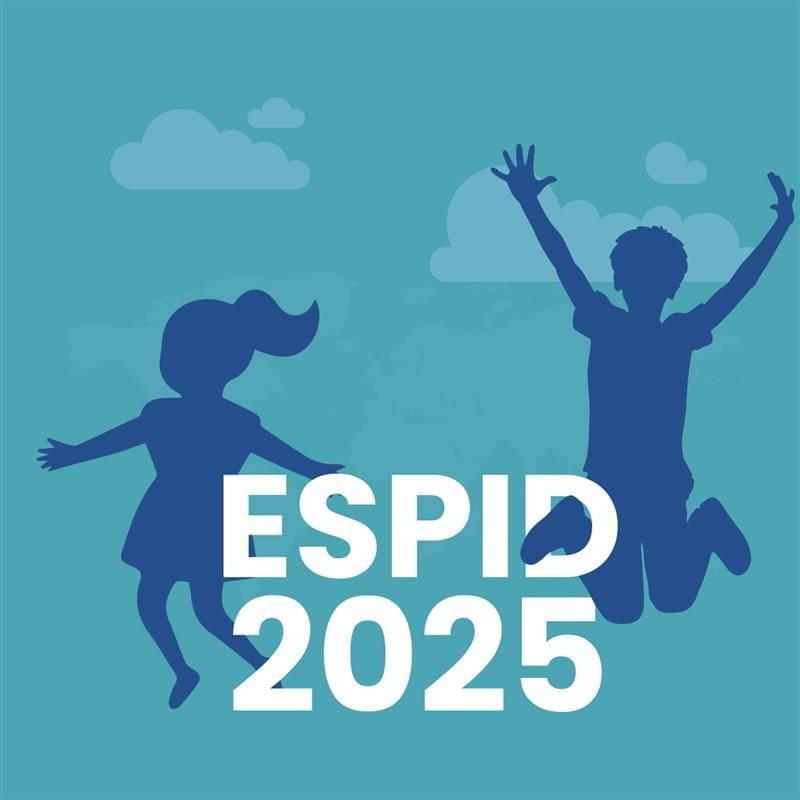ESPID 2025: ESPID Guidelines: Updates with Case Presentations and Quiz
Community Acquired Pneumonia
Speaker: Lilliam Ambroggio, United States & Giulia Brigadoi, Italy
Case 1: Stuart – Suspected Bacterial Pneumonia (Moderate Severity)
- Age/Gender: 11-month-old male
- Symptoms: 5-day fever (peaking at 39.8°C), cough, runny nose, appetite loss
- Previous Treatment: Poor adherence to outpatient amoxicillin
- ED Findings: Mild tachypnea, right lower lobe crackles, no rash
- Vitals: HR 150, RR 48, O2 sat 95%, Temp 38.4°C
- Imaging: Chest X-ray showed right lower lobe consolidation
- Lab Results:
- CRP: 111 mg/L
- Procalcitonin: 1.4 ng/mL
Diagnosis and Management:
- Decision made to admit due to pneumonia signs and moderate severity.
- Antibiotic Recommendation:
- First-line: High-dose oral amoxicillin (90 mg/kg/day TID) if tolerated
- Alternative (IV route): Ampicillin or Penicillin G for patients unable to take oral drugs
- Early switch to oral therapy is encouraged to reduce hospital stay.
Case 2: Kevin – Likely Mycoplasma Pneumonia (Mild Case)
- Age: 8 years
- Symptoms: 8-day fever >38°C, maculopapular rash, urticaria, cough, muscle aches
- Previous Treatment: 3-day course of amoxicillin
- Vitals: HR 90, RR 24, O2 sat 98%, Temp 37.4°C
- Physical Exam: Well-appearing, mild rales
- Lab Results:
- CRP: 31 mg/L
- Procalcitonin: 0.06 ng/mL
- Imaging: Interstitial pattern on chest X-ray
Diagnosis and Management:
- Etiology: Suggestive of atypical pneumonia (likely Mycoplasma)
- Antibiotic Options:
- May withhold antibiotics (self-limiting nature)
- If needed (due to rash or prolonged symptoms): Azithromycin, Clarithromycin, or Doxycycline
Case 3: Sofia – Viral Pneumonia (Very Mild Case)
- Age: 5 years
- Symptoms: 1-day fever, cough, runny nose; sibling has similar symptoms
- Vitals: HR 120, RR 38, O2 sat normal, Temp 37.9°C
- Exam: Well-appearing with mild wheezing
- Management: No labs or imaging ordered
Treatment Decision:
- No antibiotics prescribed (Watchful waiting approach). Criteria for withholding antibiotics:
- Mild symptoms
- Well-appearing child
- Close follow-up feasible
- If antibiotics needed:
- First-line: Oral amoxicillin (40–90 mg/kg/day based on local resistance)
- For unvaccinated children: Amoxicillin-clavulanic acid
- Penicillin allergy: Macrolides or tetracyclines based on reaction type
Case 4: Charlotte – Complicated Pneumonia with Pleural Effusion
- Age: 6 years
- Symptoms: 4-day fever (to 39.8°C), cough, loss of appetite, abdominal pain, increased work of breathing
- Vitals: HR 165, RR 38, O2 sat 90%, ill-appearing
- Exam: Intercostal retractions, nasal flaring, decreased breath sounds
- Labs:
- CRP: 328 mg/L
- Procalcitonin: 8 ng/mL
- Imaging: Chest X-ray showed pleural effusion and left-sided consolidation
- Further deterioration: Persistent fever and worsening inflammation despite therapy
- Follow-up CT: Large, loculated pleural effusion
Antibiotic Management:
- Empiric therapy: Ceftriaxone or cefotaxime plus clindamycin or vancomycin for anti-staphylococcal coverage (based on resistance)
- Pleural Effusion Management:
- Initial approach:
- Chest tube drainage with or without fibrinolytics (e.g., urokinase, streptokinase)
- In loculated effusion (as in Charlotte): Drainage + fibrinolytics preferred
- Advanced options (if no improvement):
- Video-assisted thoracoscopy (VATS) as rescue or primary strategy
- DNase & open thoracotomy is not recommended in children
- Initial approach:
Key Clinical Guidelines Recap:
- Outpatient, mild CAP: No routine imaging or testing; use amoxicillin if needed
- Moderate to severe CAP: CRP, procalcitonin may guide initiation/discontinuation of antibiotics
- Mycoplasma pneumonia: Macrolides only when clinically indicated; self-limiting in most cases
- Complicated pneumonia: Requires targeted antibiotics and possible pleural intervention
- Avoid unnecessary antibiotic use in children with viral pneumonia or mild symptoms
Complicated Urinary Tract Infection
Speaker: Michael Buettcher, Switzerland
Introduction:
Complicated UTI: A UTI in a child at higher risk of treatment failure due to anatomical, functional, or immunological factors.
Key subgroups:
- Known anatomical/functional abnormalities (e.g., VUR, post-surgical)
- Multiple recurrent UTIs
- Severe clinical presentations (e.g., sepsis, nephronia)
- Non-urological comorbidities (e.g., immunocompromised)
- Neonates (<3 months)
Diagnostic Workup:
- Initial workup: Clinical history, urine analysis, urine culture, blood tests (FBC, CRP, creatinine), renal ultrasound.
- Further imaging: DMSA, MCUG, or MRI based on age, severity, and underlying abnormalities.
- Avoid over-diagnosis: Use clean catch or catheter/suprapubic aspiration urine samples to minimize contamination.
Treatment Strategies:
|
UTI Subgroup |
Empirical Treatment |
Notes |
|
High-grade VUR / anatomical defect |
IV aminoglycoside or β-lactam |
10–14 days; switch to oral once afebrile |
|
Recurrent UTIs |
IV or oral (based on resistance) |
Use prior susceptibility patterns; consider fosfomycin or gentamicin |
|
Neonates |
IV β-lactam + aminoglycoside |
10–14 days, depending on response and bacteraemia |
|
Severe presentation (e.g., nephronia) |
Prolonged IV, may require CT/MRI |
Total duration up to 3 weeks |
|
Immunocompromised/post-transplant |
IV therapy |
Tailor based on neutropenia/renal function |
- Antibiotic prophylaxis recommended for high-grade VUR, spina bifida, bowel-bladder dysfunction, and uncircumcised boys with recurrent UTI.
Case Summaries:
Case 1: 6-Week-Old Male Infant
- Presentation: Fever (39.2°C), rhinorrhea, good hydration, reduced feeding, single vomiting episode.
- Urine: Clean catch positive for E. coli (>10⁵ CFU/mL), fully sensitive.
- Treatment: Started on co-amoxiclav, de-escalated to amoxicillin.
- Imaging: Ultrasound showed renal pelvis and ureteric dilatation.
- Follow-up: MCUG confirmed grade 4 VUR → Started on prophylaxis.
Case 2: 2-Month-Old Male
- History: Known bilateral hydronephrosis.
- Presentation: Afebrile, poor feeding, vomiting, failure to thrive.
- Labs: Hyponatremia, hyperkalemia, metabolic acidosis (pseudo-hypoaldosteronism).
- Urine: E. coli resistant to co-amoxiclav, sensitive to cefuroxime.
- Treatment: IV cefuroxime, then oral antibiotics + prophylaxis.
- Imaging: Bilateral high-grade (VUR 5 & 4).
Case 3: 7-Year-Old Girl
- History: Past E. coli UTI, grade 4 bilateral VUR, off prophylaxis at age 5.
- Presentation: Fever (40°C), vomiting, right flank pain, dehydration.
- Labs: High CRP (316), pyuria, mild thrombocytopenia.
- Imaging: Enlarged echogenic kidneys, MRI showed focal bacterial nephritis (lobar nephronia).
- Treatment: IV ceftriaxone → escalated to meropenem + gentamicin → resolution after 72 hrs.
- Outcome: Repeat MCUG showed grade 3 bilateral VUR → Underwent endoscopic VUR correction; doing well on follow-up.
Key Takeaways:
- Complicated UTIs should be classified into clear subgroups for targeted treatment and follow-up.
- Always use proper urine collection methods to avoid overdiagnosis.
- Tailor therapy duration and escalation based on clinical severity and pathogen resistance.
- Consider MCUG and prophylaxis in high-grade VUR or recurrent infection cases.
- Watch for pseudo-hypoaldosteronism in young infants with electrolyte disturbances and UTI.
ESPID 2025, 26-30 May, Bucharest



